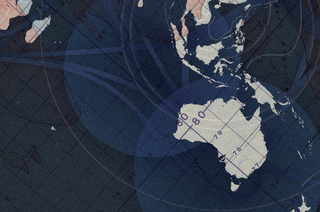The United States has conducted a series of regulatory reforms since 2018 which have streamlined processes and created new opportunities for missile and unmanned aerial vehicle exports. A new policy brief from the United States Studies Centre (USSC) at the University of Sydney finds that this creates significant opportunities for Australia.
In US MTCR reform and its implications for Australian industry and defence, Research Fellow Dr Christopher Watterson analyses the regulatory changes to the US Missile Technology Control Regime (MTCR) and what it means for US allies, like Australia.
“Missile production and acquisition of unmanned aerial vehicles are key parts of Australia’s air defence strategy,” CEO Dr Michael Green noted, “these US reforms make it easier for Australia to achieve its goals.”
The report finds that the MTCR reforms can have significant impacts on making AUKUS Pillar II and the Guided Weapons and Explosives Ordinance (GWEO) Enterprise more feasible through energised industrial partnerships. However, it notes that Australia will need to ensure its own export control regime is suitably robust and tailored to accommodate these changes.
“Based on our strong relationship and existing agreements with the United States, Australia can be first-movers on accessing MCTR-controlled technologies quickly, but it will require a strategic and concerted effort,” Dr Green concluded.
Key recommendations
For the United States
- US export control authorities should explore training and outreach for US licensing officers, defence firms and partner militaries to clarify and socialise the export opportunities of MTCR reform.
- US export control authorities should collect and analyse data on exports of MTCR-controlled technologies such that they can evaluate the impact and efficacy of reforms.
For Australia
- The Australian Department of Defence and Australian defence industry firms should pursue license applications for US, MTCR-controlled technologies that clarify US regulatory boundaries and institutionalise Australian access to these technologies.
- Australian export control authorities should review and, if necessary, update Australian export controls to ensure that they are sufficiently robust to (1) leverage the strategic and industrial benefits of greater access to US-origin, MTCR-controlled technologies, while also (2) meeting Australia’s non-proliferation objectives and US concerns around reexports of some of its most sensitive military technologies.
Media enquiries
+61 468 480 165
ussc.media@sydney.edu.au




